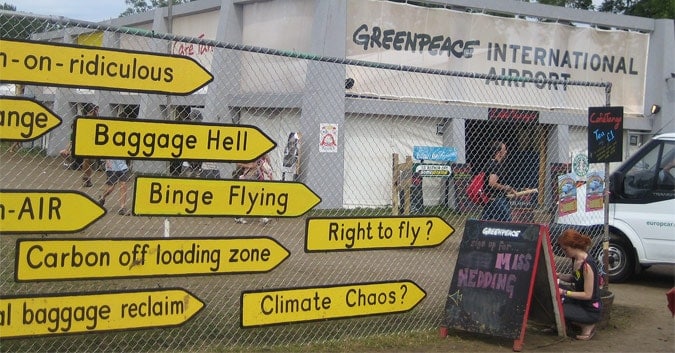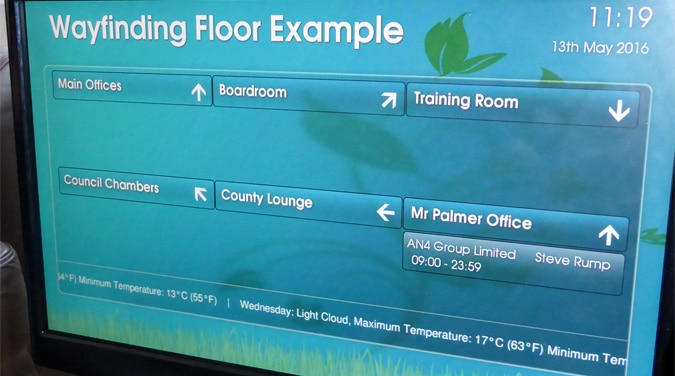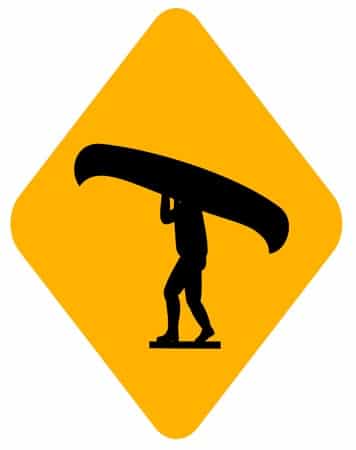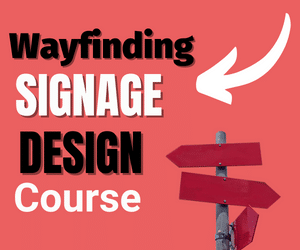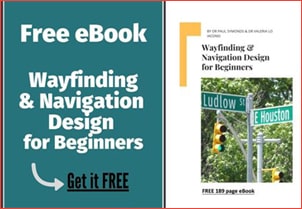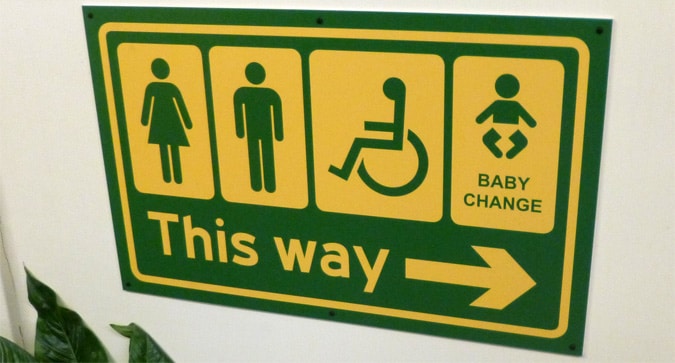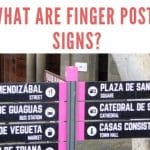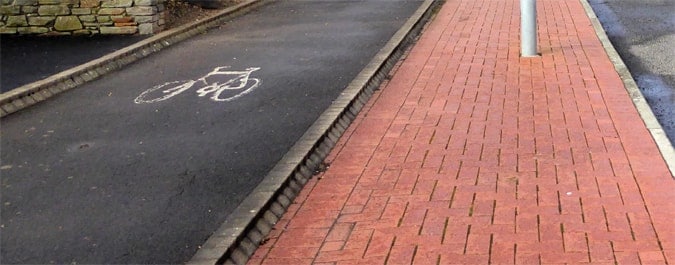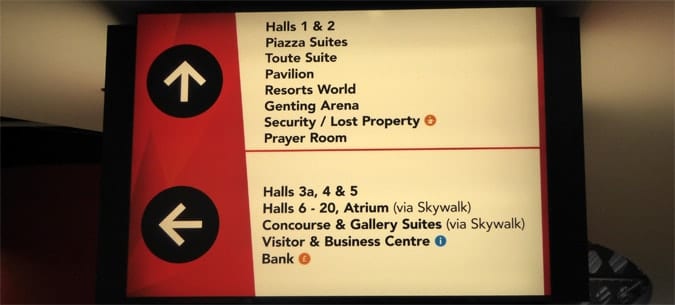Last Updated on June 12, 2023
There are different types of wayfinding signage that are used in wayfinding and navigation design and, in this post, I will explain these different types, their uses and the differences between each of them.
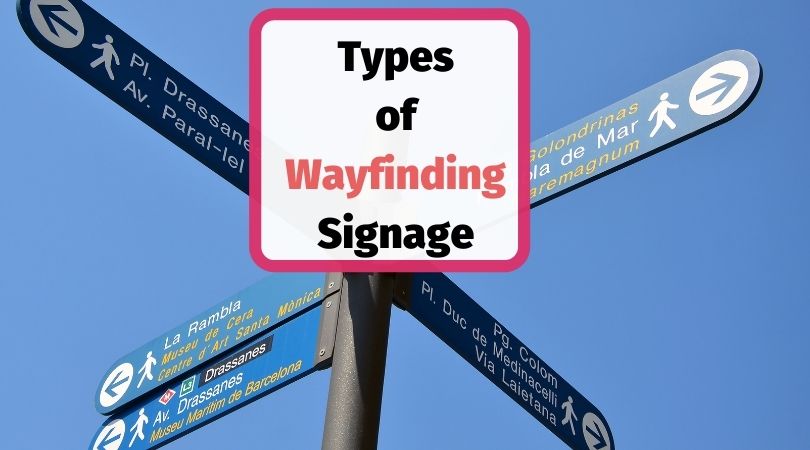
Signs and signage, as you may appreciate, are different because signs i.e. semiotic signifiers can come from signage, the use of space, design and other factors for sending people information and guiding people.
In this post, the focus is on signage i.e. artefacts in the form of display signs. It will become clear anyway as you read on.
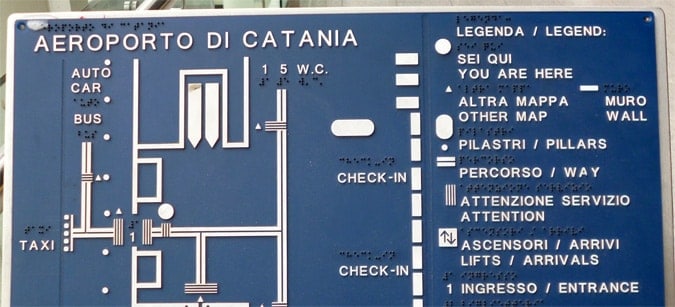
Table of Contents
Directional Signage
The most obvious type of signage, which you might expect to find in a location where people need to be guided, is directional signage.
Signage often uses symbols and arrows and, in certain spaces, tends to have internationally recognised conformity, although not always.
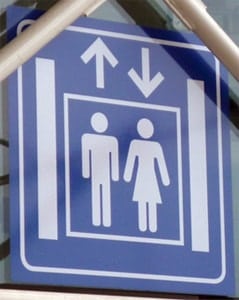
This form of signage is quite straightforward in that the point is to try and send people in the right direction such as up and down, forwards, left, right or to take a turn.
When I say straight-forward though, that is in theory because even directional signage can easily create a lot of confusion and send people the wrong way.
The classic problem is a directional sign which is perfectly designed but then, put on the wrong wall, it has the exact opposite effect of that intended.
This is a particular problem when temporary signage is being used and when not enough detail is given to positioning of signage.
Ever found yourself walking around in circles as you follow directions in an airport, hospital or other busy environments?
One of the key requirements in the design of a wayfinding system for planning this form of signage is to make sure that they are added before key decision points so that you have time to make the decision of where to go next before it is too late.
The signs also need to be visible to large numbers of people at the same time, i.e. to be positioned high enough that you can see the information needed, even if the space you occupy is busy people-wise.
The font needs also to be clear, images or icons clear to understand (and ideally independent of one’s own language) and to be clear in terms of background lighting and against the background of the sign itself.
There is a lot to consider and the process for making a genuinely efficient set of direction signs takes proper planning and organisation.
Confirmational Signs
A lot of signs are actually not to direct people, but to act as comforters to the users.
Creating a positive user experience and also ensuring that the right mood and impression is relayed to the users, is a key part of what signage can achieve when implemented correctly.
In airports a great example is when you see a ‘You have Arrived at Gate…’ type sign, which highlights the fact that you have reached somewhere.
It lets you know that you are where you think (or if you have taken the wrong route if confirms that you are in the wrong place) and acts to relax you and is an important part of navigation.
It is, in other words, not only important to tell people how to get somewhere but also important to tell them when they have arrived so that they are not left uncertain and unsure.
A relaxed traveller or user is one who is likely you spend more and return to this environment and to report having a positive experience.
Confirmational signs can be influential in steering behaviour.
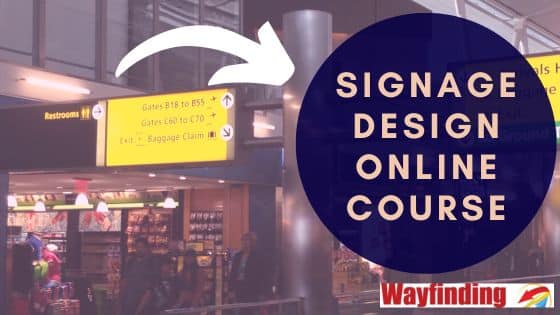
Identification Signs
It is also important to often provide information which is to let people know things such as the:
- Carousel numbers for baggage collection.
- The terminal number or letter.
- Flight departure and arrival details.
- The check-in desk, check flight, destination airport and flight number.
Identification signs provide valuable and necessary information and can sometimes be combined and crossed over with confirmational signs.
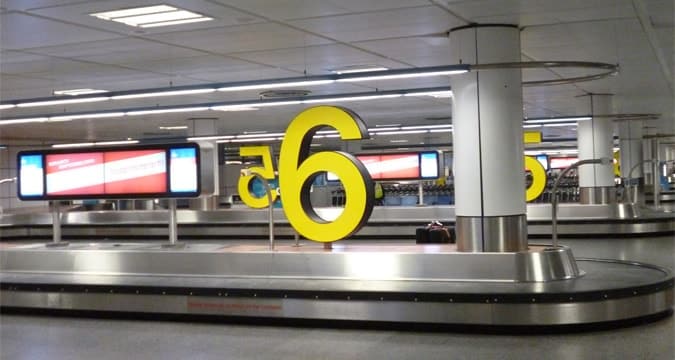
Informational Signs
A lot of signage acts also to provide information, rather than to direct, or to confirm a location. Examples can be:
- Opening hours.
- Entrance prices.
- Rubbish and litter disposal info.
- ‘You are Here’ maps.
- Special assistance help.
Informational signs though, can also sometimes cross over with regulatory signage (discussed below) which provides safety and security details.
Signage, for example, which lets you know what you can or cannot take through security in an airport.
These types of signs though, most often are to satisfy the user and to improve their customer experience.
Regulatory Signs
Security, safety and regulations need to also have prominence in certain locations in an airport, or in hospitals, ports and anywhere where there are many users and the need to regulate movement.
Signs of this type can include emergency lights signage, rules of access and warnings.
When discussing the various types of wayfinding signs, and when trying to understand how they are used to guide people. considerations need also to be given such as for DDA regulations.
Learn about DDA signage and regulations.
Competing Signage Issues
The problem with all of these types of signs is that all of these signs act to compete for space and we can end up with what is known as clustering.
By clustering, it means that there are too many competing signs and this can create the effect that information is actually lost.
Space will also most likely be allocated for advertising signage and also tactile signage and priority needs to be given in certain locations in the airport to different signage types.
Yes, it is complicated, hence the skills of a wayfinding expert are to be valued by airports and other locations looking to become efficient.
Dr Paul Symonds has a PhD in Wayfinding from Cardiff Metropolitan University in the UK. Paul works with the signage industry, airports and other locations providing wayfinding audits, consultancy and training.

